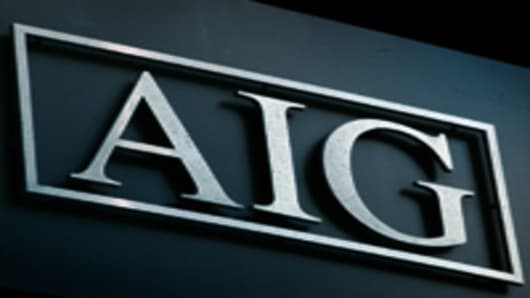But to satisfy the government loans, he has been trying to sell divisions, a fact made harder because of AIG’s opaque structure.
Mr. Liddy also took a jab at AIG’s former chief executive, Maurice R. Greenberg, saying he was the one who oversaw AIG’s foray into derivatives. That business “has literally brought us to our knees,” he said on Bloomberg television.
Mr. Greenberg, known as Hank, fired back with a lawsuit against AIG, which he accused of securities fraud.
Mr. Liddy predicted the sales would go more smoothly and profitably once AIG was carved up into comprehensible parts, and said there might be a public offering for the reorganized property and casualty business in nine months to a year.
Joe Paduda, a former AIG employee who is now principal in the insurance consulting firm of Health Strategy Associates, agreed that the “black box” aspect of AIG was putting off prospective buyers. “They don’t want to buy anything they don’t think they really understand thoroughly,” he said.
Within its web, different operating companies could affect one another’s performance in unpredictable ways, he said.
AIG’s other divisions have an even cloudier future. Its global life insurance division and its Asian insurance operations are being shifted into two special-purpose entities, where they will help satisfy debts to the Federal Reserve Bank of New York. They may eventually be sold, too, but no one at the company was predicting when.
Moody’s Investor Service reacted to these developments by holding AIG’s credit rating steady, as well as the ratings of its property and casualty units. But it downgraded the debt of certain divisions, including its life insurers.
“This is not a good option, but it’s the least worse of a lot of bad options,” Mr. Paduda said.
In a conference call with securities analysts Monday, Mr. Liddy said AIG had been trying without success to sell the Asian insurer, the American International Assurance Company or A.I.A., and the worldwide life insurer, called Alico. Other insurance companies have made offers, but with the life insurance industry in a major downturn, Mr. Liddy said prospective buyers could not reach far into their pockets.
Some observers speculated that competitors had been trying to buy its businesses on the cheap.
“AIG is down, and they’re kicking them as hard as they can,” Mr. Paduda said. “AIG is not very well liked in the insurance business.” He said that back in its glory days the company had a reputation for aggressively poaching its rivals’ customers.
By putting the stock of Asian and worldwide life insurance units into the new special-purpose entities, the company said it was accomplishing two things: taking them off the auction block until the industry recovered and better offers came forward, and paying back a portion of the roughly $38 billion drawn down from its total $60 billion lending commitment from the Fed.
The company said it had also reached an agreement to give the Fed a stake in the future cash flows of its domestic life insurance businesses. After taking these steps to effectively pay back the $38 billion loan, AIG will have a much smaller credit facility in place from the Fed, which will extend $25 billion as needed.
The Fed loan has been one of the most expensive parts of the government’s rescue package, and by satisfying part of it with the two companies’ stock, AIG will be able to use less expensive forms of government support.
It still has a $40 billion capital infusion that it received from the Treasury in November, which was cheaper than the Fed loan because it was secured with preferred stock. Now the terms are even better, as the Treasury has agreed to drop the 10 percent dividend on the stock.
In addition, AIG will get a new commitment from the Treasury of $30 billion, in exchange for a second block of preferred stock with no dividend. The company said it did not intend to use the new commitment immediately.
Mr. Liddy said the goal was to replace borrowings from the federal government with equity wherever possible. Such a debt-to-equity structure is intended to decrease the financial burden and reduce the prospect of credit downgrades.
Other divisions, like the airplane leasing subsidiary, are still expected to be sold separately, and depending on how the sales turn out some of those proceeds could help satisfy the Fed.
Mr. Liddy said AIG’s need for emergency cash from the government had stopped growing in recent weeks and had stabilized at about $38 billion. He said the vast majority of that sum had simply passed through the company and gone to other financial institutions, where AIG had to settle contractual obligations, many of them involving derivatives. A lesser amount from the government had been used to bolster the capital of its own operating units.
AIG’s needs for cash could suddenly grow, however. If conditions worsen, perhaps because customers and employees flee, or if asset sales take too long and their prices fall farther, then the ratings agencies might still downgrade the company.
In the event of a steep downgrade, AIG might have to come up with $8 billion to $11 billion in cash to provide collateral to its counterparties, Mr. Liddy said in response to a question.


